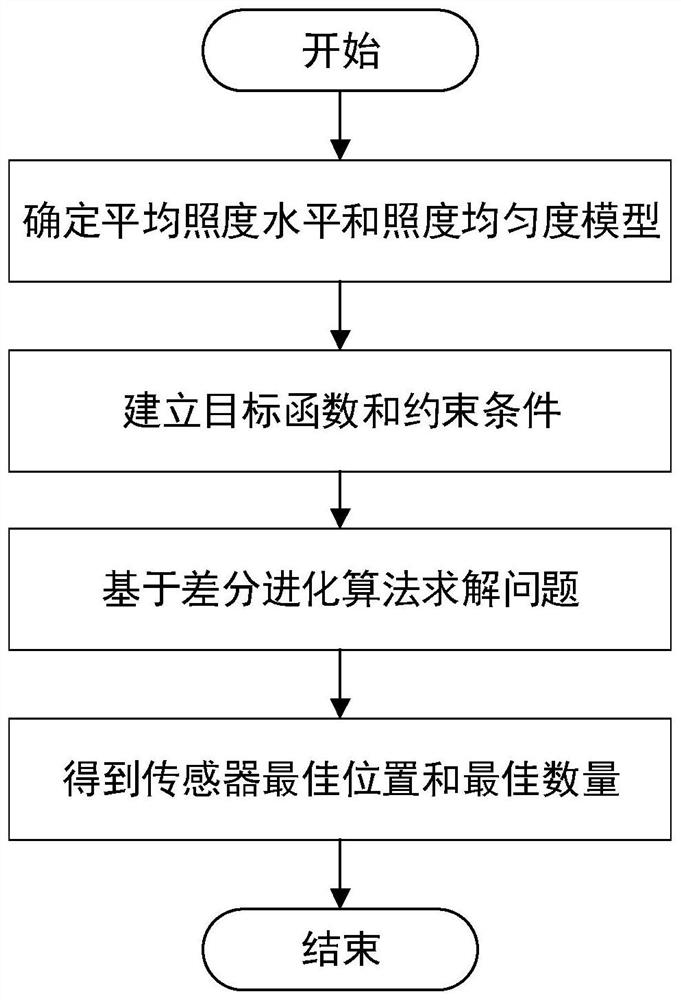Photovoltaic sensor optimal arrangement method based on differential evolution algorithm
A technology of differential evolution algorithm and layout method, which is applied in the field of building energy, can solve the problems of increasing the number of objective functions, increasing the difficulty and time of solving problems, and achieving the goals of reducing lighting energy consumption, maintaining visual comfort, and reducing initial costs Effect
- Summary
- Abstract
- Description
- Claims
- Application Information
AI Technical Summary
Problems solved by technology
Method used
Image
Examples
Embodiment Construction
[0060] The technical solutions in the embodiments of the present invention will be described clearly and in detail below with reference to the drawings in the embodiments of the present invention. The described embodiments are only some of the embodiments of the invention.
[0061] The technical scheme that the present invention solves the problems of the technologies described above is:
[0062] The overall frame flow chart of the method of the present invention is as figure 1 As shown, the first two illuminance-based metrics that need to be determined are the average illuminance levels and illuminance uniformity (U o ). to calculate Several parameters need to be considered, including reflectance (i.e. ceiling, walls and floor), parameters related to luminaires, and room area. In order to determine the area under test It can be represented by the following formula:
[0063]
[0064] Where Nl is the number of lamps, n l is the number of lamps for each lamp, Φ n ...
PUM
 Login to View More
Login to View More Abstract
Description
Claims
Application Information
 Login to View More
Login to View More - R&D
- Intellectual Property
- Life Sciences
- Materials
- Tech Scout
- Unparalleled Data Quality
- Higher Quality Content
- 60% Fewer Hallucinations
Browse by: Latest US Patents, China's latest patents, Technical Efficacy Thesaurus, Application Domain, Technology Topic, Popular Technical Reports.
© 2025 PatSnap. All rights reserved.Legal|Privacy policy|Modern Slavery Act Transparency Statement|Sitemap|About US| Contact US: help@patsnap.com



